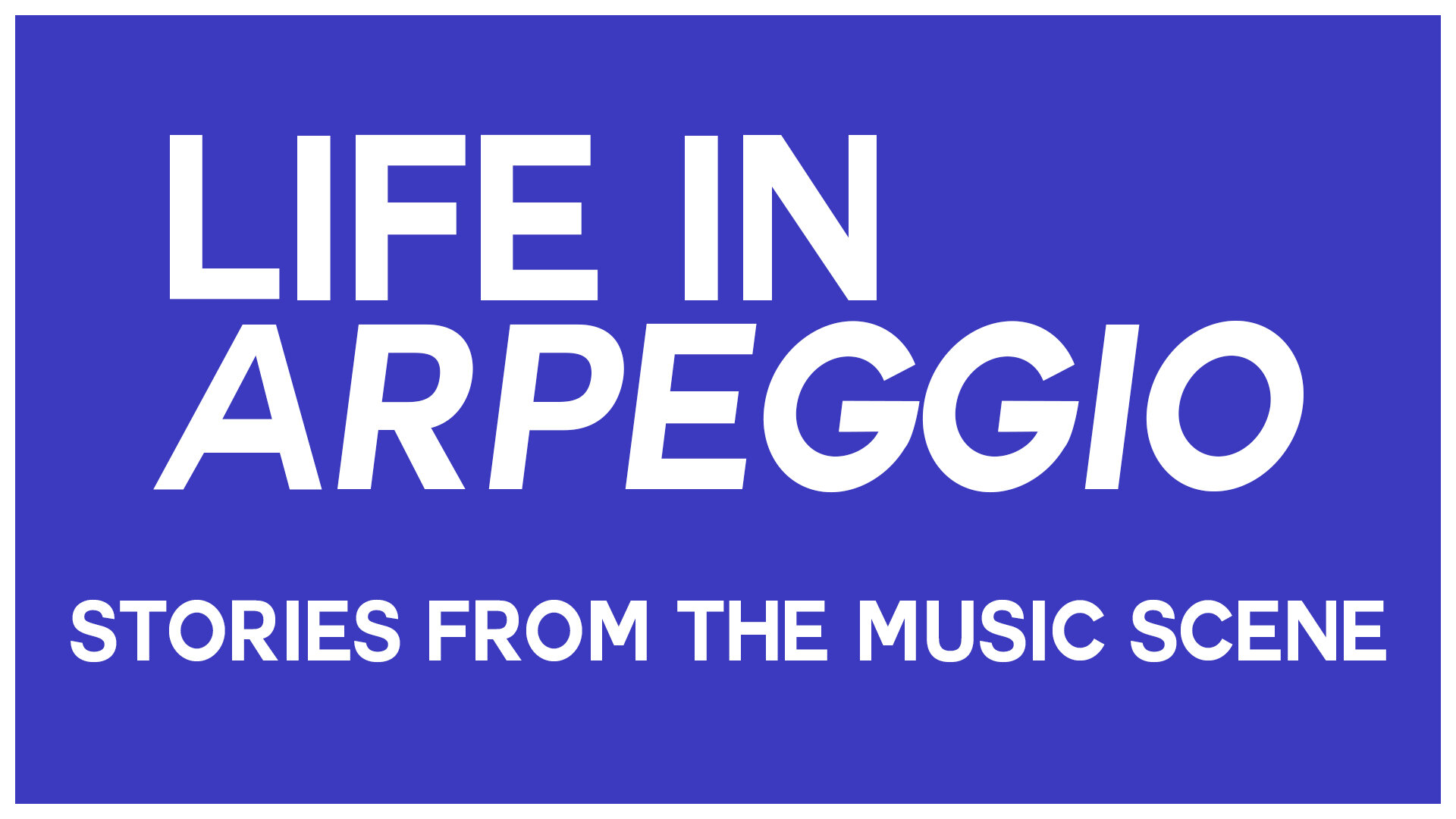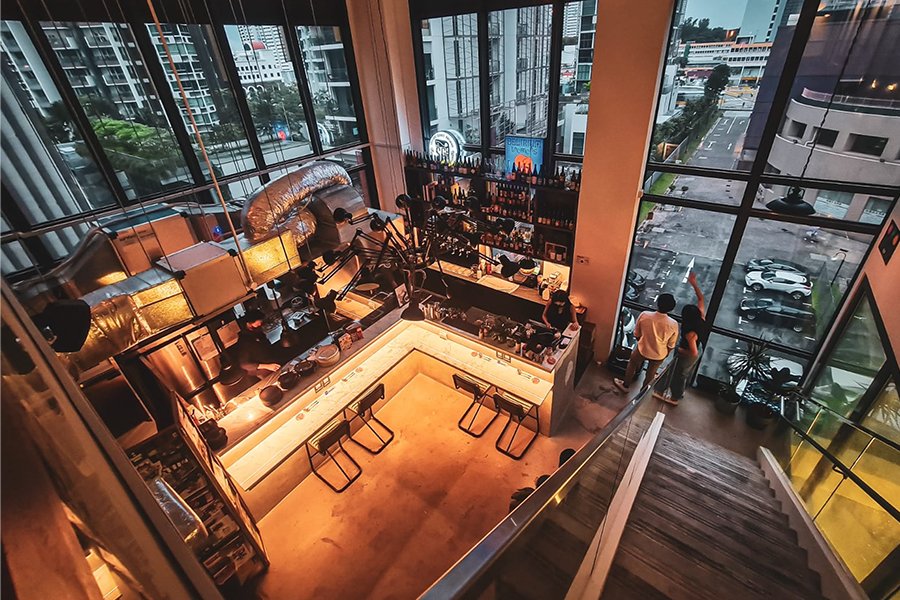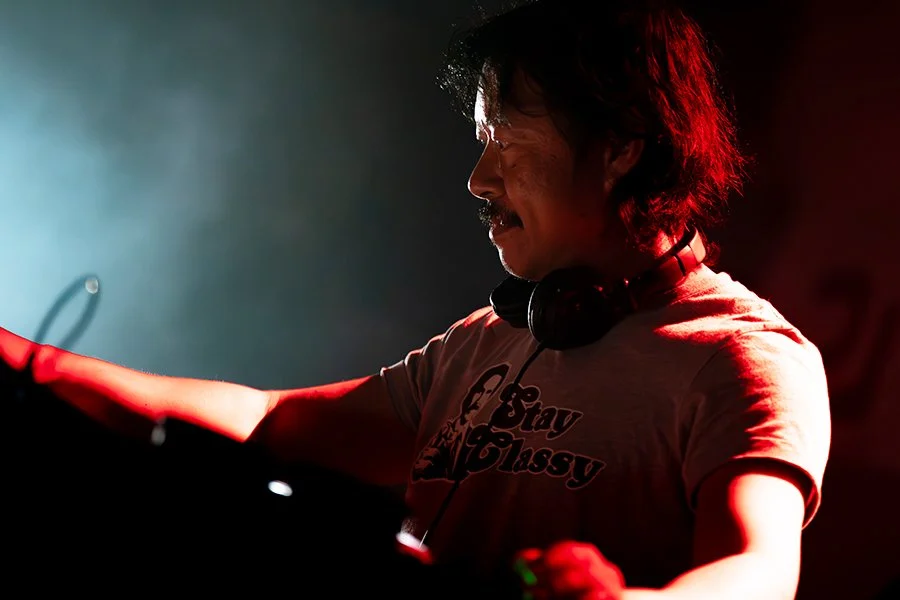The Tale Of Ratmir Johnson: Uncovering The Identity Of The Hip-Hop Protagonist
Here comes a new character, and his name is Ratmir Johnson (Credit: Courtesy of Ratmir Johnson)
To understand Ratmir Johnson is to grasp the concept of metamorphosis. Like the origin story of a comic book hometown hero, the fruition of Ratmir Johnson as a musician follows a trial-and-error journey of self-discovery. Before donning his current alias with pride, Amir Bin Mohamed Noor delved into everything from hardcore to r&b, in hopes of pinpointing a sound that resonated with his headspace at the time. Today, his web of pursuits has converged on a strident focal point, brandishing a new power that rides on the tide of hip-hop. It’s an identity that wraps his expressions in steel, giving him the muscle and gusto to make art as he sees fit.
With a debut EP assertively titled “.”, Ratmir crafts a plot that carries plenty of personal weight. It’s a gesture of affection to the sound he’s chosen to reside in, firing out heart signs via a series of nostalgic sample choices and production routes. His love for boom bap and jazz-influenced hip-hop shows in tracks like “Snakes” and “Halloween”, adorned with mawkish piano chords and raw, crisp percussions. While on “Jimi”, he shows fluid rap eloquence that addresses his self-made ascent, stacking verses atop a torrent of flanged-out, Hendrix-esque guitars. He’s even conceptually bookmarked the EP with a trio of soundbites within, referencing moments from some of his idols, Mac Miller, Madlib and Tyler, the Creator. The EP exists as a tale the fleshes out the character of Ratmir Johnson, and it’s an engrossing chronicle that’s easy to digest.
But to uncover an even deeper understanding, you can hear more from the charismatic protagonist himself. In this interview, he reveals the obstacles he’s had to topple, regaining his strength, and falling in love with music – his music, especially – all over again.
“You can be who you truly want to be and when you grow up, the world appreciates that better.” (Credit: Courtesy of Ratmir Johnson)
To begin, what does the Ratmir Johnson brand embody? And who are the people you wish to reach out to with your music?
The Ratmir Johnson brand would probably embody creating without prejudice. Well, we all have our own experiences, strengths and weaknesses and we tend to express that our own way. But somewhere along the line, the fear of putting out emotions pushes us into a corner, and we tend to think about how others would react to what we do. I am the same way. But this past year after dropping the EP, I feel more confident of expressing and being more open, which also leads into who I’m trying to reach with my music – the outcast kids. The kids who are in secondary school, or anywhere for that matter, who feel like they don’t fit in. Well you might not fit in, but that’s why it’s cool! Because you can be who you truly want to be and when you grow up, the world appreciates that better.
You’ve likened the alias to a separate identity coined by comic book heroes. Does this mean that Ratmir Johnson is a huge leap from who you usually are beneath the music?
When I came up with this name, I was 16. My idols back then had stage names to differentiate themselves or feel like a larger-than-life character, like Eminem’s Slim Shady. Ratmir Johnson started that way too, on hindsight. I wasn’t the most outspoken kid. But growing up, I learnt that I’m just showing another part of myself through this character. So I can’t say that Ratmir is very far off from me as a person but more intertwined. I am the musician and I am the person behind the mask. But at the same time, Ratmir did give me strength, because sometimes I can’t say what I want to say as Amir. For whatever the reason, maybe either I’m embarrassed of saying it or it might be a little too controversial to say certain things. That’s when Ratmir has to come out and say it.
“I wouldn’t get into hip-hop as a genre till a couple years later when I discovered Tyler, the Creator.” (Credit: Courtesy of Ratmir Johnson)
You’ve cited Avenged Sevenfold as a pivotal influence growing up. Is there an alternate universe where you would’ve been a hardcore musician instead?
Why does it have to be an alternate universe? Haha! I’m always pushing myself in various different directions in music and that’s what I would say my strength is. You will probably hear a metal or punk or indie-style song in my discography sooner or later. But I did have other projects that were either shelved or we couldn’t finish. Back when I started, I was making music with my five friends. We had/have a crew called The Fools; it was supposed to be a band but none of us could play instruments and only one other ‘Fool’ had any interest in music. So we started off writing ballads but when we went to Polytechnic, we just didn’t have the time to finish that project. We are still tight till this day but it’s more of a friendship-type gig, no longer a band. But after that I went by the name Curly Brown, which didn’t get much traction but the songs were mostly produced by me as well and it was more of 2000s r&b, which honestly weren’t my best works but the emotions were there.
Clearly, you obviously swerved towards a different direction in the style of hip-hop. How did you end up gravitating towards that?
Well, honestly it comes back to The Fools. My brother, Xian “Fessa” Fu, loved hip-hop. I would always show him metal songs and he would show me hip-hop songs. At first I didn’t like it, as I couldn’t catch the lyrics and I didn’t have any emotional attachment to it. But then I found Eminem, as corny as it might seem. I liked the way he would rhyme words that might not necessarily rhyme and play with idioms, metaphors, similes, and other literary devices. That’s when I was like, “Hey maybe I should try this”. But I wouldn’t get into hip-hop as a genre till a couple years later when I discovered Tyler, the Creator. The whole jazz-inspired, clunky synthesisers off the album, Wolf, resonated with me the way metal did. Then after that I fell in love with the craft, and everything else is history.
“The way I started on this whole sample-based boom bap-type vibe was in 2019 when I reheard Kanye West’s College Dropout album.” (Credit: Courtesy of Ratmir Johnson)
You produce your own tracks as well. What would you say is your modus operandi in the studio?
This ironically is a very difficult question for me to answer as I feel I approach each song differently. But the gist of it would be that most of my songs usually start with an idea, or a motif. Then it’s basically figuring out the puzzle of what goes where and what sounds nice from that idea. For example, one day I might have a cool melody where I write from then I play the piano or guitar to play chords, or sometimes it’s as simple as having a bassline groove and figuring out rhythms, melodies or stacking the sounds. Notice how I didn’t say rap. This is because the raps come in at the end 80 per cent of the time. Rap is still a genre I use a lot but at the same time, rhymes also help fill the negative space of a track, so if your track is overwhelming I would try to keep it simple with the lyrics or vice versa.
The cover art for Ratmir’s debut EP (Credit: Courtesy of Ratmir Johnson)
“.” is a powerful title for a debut EP. What does it represent for you as an emerging artiste – a high point, a dotted milestone, the end of a statement?
The album title came one month before the release of the EP as well as the album art. The original title was supposed to be Bedroom Popstar Vol.1, but that’s when I ran into my first hiccup – designing the album art. It’s not that I’m not a good artist or anything, like I can draw to save my life, but I often would commission my artist friends or artists whom I knew to do it. Like to get a feel of how other people would interpret my music. But this time, ambitious little prick Amir decided, “Hey I made the EP, I should make my album art as well”. Oh how I regretted that decision.
I came up with at least 20 variations and started asking the opinions of my friends and family to get a feel of what they thought. The opinions were so split and most of the time ended up being equally split. So I couldn’t even use a democratic method to come up with the album art. I got so frustrated one day out with my friend that I said, “Bro, I think I’m just gonna call the album full-stop and be done with it”. As soon as I said that, I literally just added the pink colour you see now and put my name on the album art. The next day I thought it was really funny and rolled with it. I’m sorry to disappoint you if you felt that there would be more, but an afterthought that I had is that a full-stop is also pronounced a period, like a period of time. So there’s that explanation too.
Musically, the EP borrows heavily from the sample-heavy loops of old-school hip-hop. What drew you to this audial aesthetic?
Well, the way I started on this whole sample-based boom bap-type vibe was in 2019 when I reheard Kanye West’s College Dropout album. The samples he chose utilised vocals as the leading instrument and it was so crazy to me, like his beats were vocals, and his raps wouldn’t clash. I wanted to kinda put my foot in that lane and see what I could come up with. Another reason is also because I wanted to work with a few local artists, but when I hit them up I didn’t get a response, so sampling their work was the closest I could get to a collaboration. This rabbit hole kind of just kept getting deeper, from sampling to ‘collaborating’ to me actually falling in love with the techniques of chopping samples up or adding layers to existing works. It’s like going to a museum and painting over a Van Gogh. You can’t do that, but imagine if someone actually did!
“Hey Baby”, on the other hand, presents a campy, mushy, bubblegum-like flavour with its earnest pop vibe. What led you on this perkier detour?
“Good artists copy, great artists steal.” – a quote from Picasso. The bulk of the entire EP was written in a two-week span. I was constantly writing and trying to figure out the songs, simultaneously writing one song for an hour and in the next it would be a completely different song. I was writing the first song “Snakes” at about noon one day and had just gone to the loo. On the toilet, I started singing randomly and came up with the melody for “Hey Baby”. I bolted out the toilet and recorded the melody with my phone. And this is where that quote comes in handy! The chords for G-Dragon’s “Who You” is basically the same as “Hey Baby” but in a different key. It just fit so perfectly I had to use it. I tried to imitate his ad libs as well, to push the similarity further. I’m really happy about the way it came out, though people seem to love the poppy, campy vibe.
Why did you decide to give nods to prominent rappers and producers in the intro, interlude and outro of the EP?
The idea for this literally happened the same day I uploaded the tracks for distribution. The EP just seemed like a collage of songs to me, which is nice and all but I wanted an underlying narration, because each of the songs represents a certain moment in my life in the past two years. The intro is Mac Miller talking about how he wanted to be a better person to improve his music. That is what the track “Snakes” is about. It’s the first time I expressed how I felt as a human being instead of telling stories that never happened to me. I felt it showed I was improving as an artist.
The interlude was intentional as well. There is this stigma that if you sample to make music, you aren’t a real artist. That’s literally what Madlib explained. Sometimes it’s even harder to sample. And to basically show what he is talking about, I put “Free Love” after it. It samples Mickeyleano, and, to me at least, proves that sampling music is authentic music, as what I added to Mickey’s original sample is much more complex than it seems.
And lastly, the outro. I love Tyler, the Creator. I could say he is my favourite artist of all time. It kinda was a no brainer to add his voice to the ending of the EP, and chasing for greatness is what every artist is searching for to a certain extent. Also it left the EP very open, like I can literally drop anything else and it would make sense because I’m chasing for greatness in music.
“The harshest truth of this world is that we need to take care of our necessities before our passion.” (Credit: Courtesy of Ratmir Johnson)
Are there any key anecdotes or stories within the tracks that you wish to elaborate?
Well the track I would love to highlight would have to be “Halloween”. I got out of a relationship two years ago and for some reason, my lyrics went to a darker place where I would use the reasons for the breakup as punchlines. And I heard through the grapevine that it affected my ex. That isn’t what I want for her. Like we broke up and I guess I was feeling salty but I wanted to write a song that would make her smile if she heard it instead of being affected by it. The story depicts our first kiss, and how this woman has had an impact in my life in ways that are positive. The music reflects that with the jazzy undertones as well as the synth-heavy production. It’s awkward but at the same time beautiful.
What is the hardest thing about being a DIY solo musician for you?
Honestly the hardest thing about being a DIY musician is time and money. The harshest truth of this world is that we need to take care of our necessities before our passion. Making music is free, but we don’t listen to music that is made by unknown artists or artists that aren’t endorsed by a brand. In order to fight this, we need our production value to be at peak performance. And how do you do this? In layman terms, basically having your mix and master sounding professional. But how do you do that without the proper experience? You pay someone to do it. And it’s honestly a never-ending cycle from there. You don’t make money off your tracks, so you work a full-time job, fuelling your cash into your tracks hoping it would bring some returns but it’s not enough. So that basically sums it up. Having more money and time would honestly make making music a lot easier for me.
And lastly, what’s next for Ratmir Johnson now that the EP is finally out?
Ratmir Johnson is going to take a break from being an artiste for the time being. I would probably drop another EP at the end of this year, but in the meantime, I’m working on three or four different singles that are going to be released in the coming months, which are going to have a different vibe from what the EP entails. But apart from that I’m actually getting into producing for other artistes. I want to take the backseat and see what I can do for other artistes as it’s something I’ve always wanted to do, and I feel my production is at a level which my artistry isn’t at, therefore it would be growth process to learn from other people’s energies as well as their workflow.
Listen to “.” by Ratmir Johnson on Spotify. Follow his Instagram page to stay updated with his activities.
















